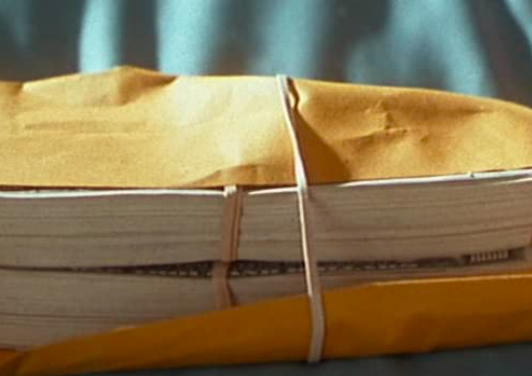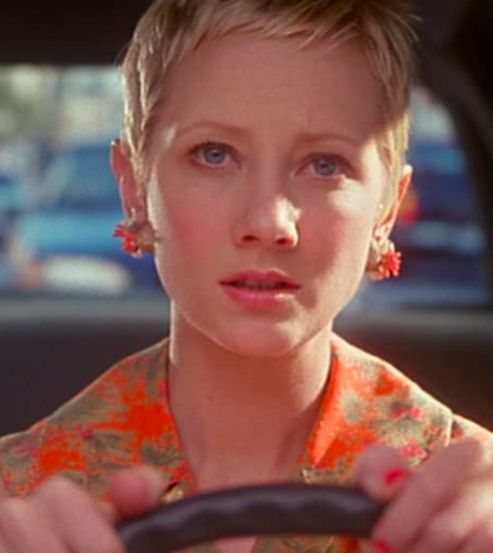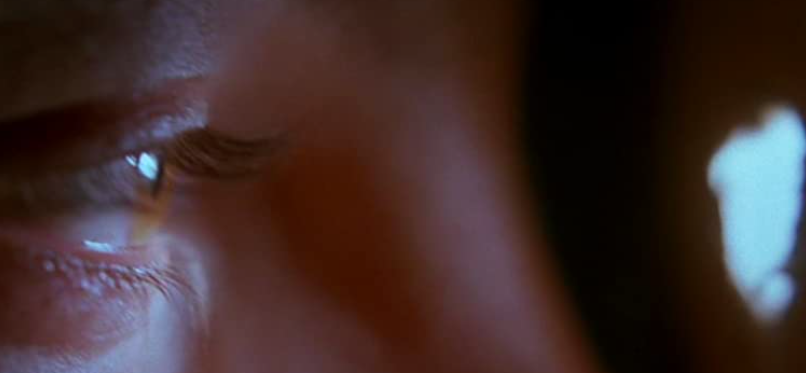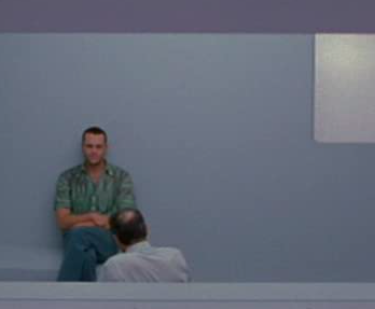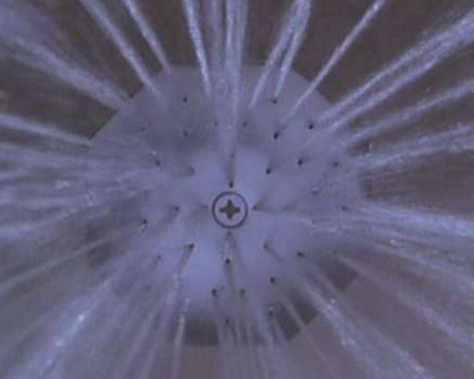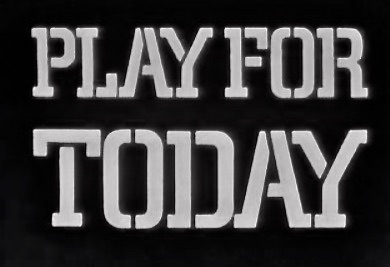
Based on Ed Gein
Alfred Hitchcock’s masterpiece was in all likelihood inspired by the serial killings of Ed Gein. However, PSYCHO does not use Gein’s name and many fictionalized elements have been added.
With the end of the production code in sight, Hitchcock probably felt he could take certain liberties. He knew stories about grisly murderers captured the public’s attention.

Although I had heard of the film during my youth, I didn’t see Alfred Hitchcock’s PSYCHO for the first time until my Freshman year in college. It was while taking an introductory film course. An assignment required students to analyze the shots of the shower scene.
The purpose of the assignment was to learn how the director had devised a “formula” for horror through storyboarding and editing. As a result, I became very familiar with what is probably the most famous “action” sequence in motion picture history.
Shot by shot analysis
It starts with Marion Crane in the bathroom. She is showering, when her attacker enters. The knife slashes down for the very first time. Then, it is raised again.

Marion’s body has water splashing down it, partially obscured by the intruder’s shadowy arm. Marion realizes she is being attacked; instinctively, she begins to fend off the intruder. There’s a close-up of the knife striking her three more times.
As the knife slices towards her, Marion turns away. She is recoiling and confused. The knife comes into clear focus. Water bounces off the metal blade. We see Marion’s body. There is no blood, but it is implied that she is receiving the fatal wound.

Marion looks entranced, as if she is dreaming. But she knows she’s really dying. There’s a reverse angle of the door, and the knife slashing. Then, we see Marion’s face. She is in agony. Blood drips down her legs, and Marion turns herself away. There’s a slightly wider shot of Marion with the knife reappearing. Causing a greater flow of blood. Then a flash of the bare tile wall. Marion’s bloody hand is seen. She is still turned away.

We then get a shot of the intruder exiting.

It looks like a woman wearing a long dress. Marion is still pressed against the white tile. She manages to turn herself back around. She begins to slide down slowly with outstretched arm, as she loses her grip on life.

Her body is still sliding down the shower wall. She’s alive and conscious but her eyes are now glazed. She looks forward and her arm remains outstretched. Her hand grasps the curtain. Marion holds on to the curtain for dear life. But she begins to pull the curtain down with her. The curtain is unable to bear her weight and it rips away from the supporting bar. The hooks are popping, one at a time.

Then Marion’s arm falls, followed by her head and torso.
*****
I soon memorized the shower sequence forward and backward. When you go that deep with it, you start to think Marion Crane is real, that she is your own personal cadaver! Actually it feels like you are being shown how to violate a woman, and I think that is a bit of what Hitchcock and screenwriter Joseph Stefano intended.
The poetic, less scientific part of your brain sees her as a doomed creature. You think to yourself, if only she hadn’t stolen the money or left Phoenix.
Friday afternoon in Phoenix
It was Friday afternoon in Phoenix. Marion Crane was meeting her lover Sam Loomis at a hotel. Sam had a lot of debt, and until he was more financially secure, he wouldn’t be able to marry Marion.

After their romantic rendezvous, Marion went back to the real estate office where she worked. Her boss was a man named George Lowery. Mr. Lowery was meeting with an oil tycoon. The tycoon told Marion he was purchasing a house for his daughter and paying for it with cash. Mr. Lowery became concerned about leaving $40,000 in the office over the weekend, so he asked Marion to take it to the bank. Then Marion was free to go home afterward.
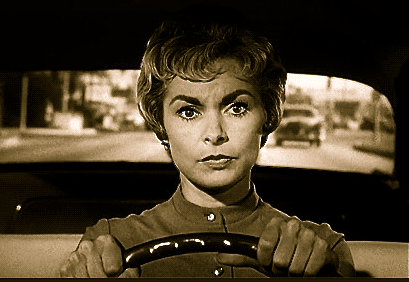
Instead of going to the bank, Marion just went straight home. She decided to keep the money for herself. She stuffed it into her purse and packed a suitcase. Then she got on the highway and drove out of Phoenix. She drove and drove until she was so tired, she was forced to pull over. Marion soon fell asleep on a lonely stretch of road.

She was awakened the next morning by a highway patrolman. The officer seemed suspicious of her behavior, but then let her go.

Marion feared he might remember her, so she stopped at a used car lot to trade in her vehicle for a different one. Later, as she continued to drive along the California highway, she found herself caught in a fierce storm. Marion then missed the turnoff to Sam’s place and ended up stopping at a quaint little motel. The charming proprietor welcomed her and offered to fix her dinner.

***

Jlewis wrote:
This essential needs no introduction since it has been discussed almost as much as CITIZEN KANE by the literary elite, despite most not considering it the “greatest,” even for director Alfred Hitchcock. It is one of those key mass-appeal hits that you pretty much remember where you were when you first watched it. I was roughly 12 and stayed up until midnight to catch it on TV, since that was the only time it was permitted on the air-waves. This was still before home video and also before PSYCHO II.
Also…roughly the same time…I saw JAWS on TV and, yes, I do need to mention both titles in comparison here because they were two that I greatly avoided as a child, being ominously tied by a shocking music score played during grisly murder scenes: PSYCHO had Bernard Herrmann’s screeching violins and JAWS had John Williams’ slowly accelerating train-like “approaching danger” theme. (Trivia note: Williams was initially considered to score PSYCHO II but Jerry Goldsmith took over on that one.) My parents saw the former in theaters the summer before they became seniors in high school while the latter was seen by my fellow elementary school students fifteen summers later but, as much as I loved sharks, I was very much afraid of them.
When I finally got to it, JAWS wasn’t nearly as scary as I thought it would be, although I was genuinely riveted by all of the suspense leading up to the rather silly scene when the mechanical “Bruce” chomped at Robert Shaw. As for PSYCHO, I considered parts in the second half a trifle dull (too much Vera Miles and John Gavin) and so much of the overall “feel” being rather dated, but the shower killing still forced me to close my eyes at first viewing. Later I realized that it was all clever editing and we don’t even see the knife touch any skin. Supposedly chocolate sauce was used for “blood.” Yet there is no question which film is better, so I have returned to it many more times than JAWS.

As I suggest, PSYCHO does have various flaws but they do not make it any less entertaining and re-watchable. For example, as much as I adore Janet Leigh and everything she appears in, even I will admit that a younger actress with more adolescent anxiety would have been better suited to this role as Marion Crane since she tends to be too practical and maternal in her roles for one to believe she would abruptly steal money and escape…only to another state! Then again, I always felt the “hot money” part was just a gimmick to get her “on the run” and make Sheriff Chambers (played by the great radio voice John McIntire of Suspense fame) show at least some interest in her disappearance when boyfriend Sam (boring but picture-perfect John Gavin) and sister Lila (feisty Vera Miles) seek his help.

No question that Lila cared passionately for her sister in an overly protective way; Vera Miles repeated her role in PSYCHO II and was quite forceful in making sure justice is maintained against Anthony Perkins’ Norman Bates in that one.
One reason Hitch was so successful as a director and producer is that he would recycle what worked well in one film and improve upon the idea in a future one. Examples: his following up on the Statue of Liberty’s climax in SABOTEUR with the even more exciting Mount Rushmore in NORTH BY NORTHWEST, while one can easily see the menacing look of Norman Bates’ stuffed birds, including crows, in this feature as a teaser of THE BIRDS to come.
With VERTIGO, he played with a two part structure, spoiling the plot midway through but allowing us to follow Jimmy Stewart’s Scotty unravel it himself. Part one involves Madeleine, who dies tragically and puts Jimmy in the mental ward temporarily (listening to Beethoven), while part two involves Judy (also played by Kim Novak) whom Scotty eventually realizes is the same person…and she dies tragically as well. I think one reason this film was one of Hitch’s less successful efforts (initially, although now it is a critical darling) was due to the mystery angle being spoiled too early.

Therefore, PSYCHO repeats the 2 Part structure but makes sure that we the viewers merely think we are spoiled by almost-but-not-quite seeing “mother” doing it, leaving plenty of mystery regarding “mother” (always carefully obscured as in that wonderful overhead tracking shot of Norman taking her down the stairs to the fruit cellar even though she is…obvious spoiler…not struggling at all!) and provides us with one of those great gotcha endings that benefits, once again, by Bernard Herrmann’s explosive orchestra music over “The End.” There is little question that moviegoers in that summer of 1960, the last of eight tranquil summers of the Eisenhower Era, left the theater feeling they saw something so exciting and entertaining that, like your favorite amusement park ride, you just had to go back and experience it all over again (at 69 cents for matinee showings).
***

Part 1 is all about Janet Leigh’s Marion Crane. She has worked at the real estate firm for ten years, living with her sister. John Gavin’s Sam is the man she wants and, despite being divorced, he refuses to marry her on account of money issues. At this time, it was still customary for men to be providers and this potential provider is still paying off alimony checks to his ex-wife which Marion says she is willing to lick the envelopes and stamps for. When the greasy Tom Cassidy (Frank Albertson) purchases an expensive house for his daughter…who gets to be married, something that Marion longs for…he leaves her with a wad of cash that she is instructed to put in the bank deposit.
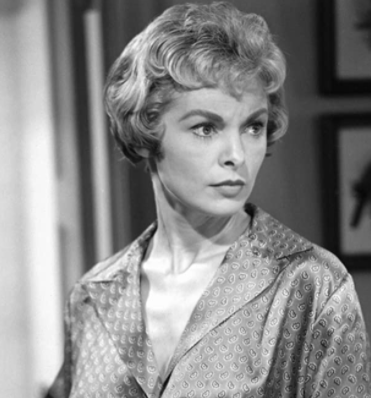
As hinted already, I do have a few issues with her abrupt decision to become a thief who violates a decade of her boss’ confidence just to “provide for” Sam, but…this is a movie about passionate sexual urges and Marion, like Norman, has these urges that must need to be satisfied! (Key line later applying more to Norman but relating to Marion as well: “These were crimes of passion, not profit.”) Maybe, she is thinking she could force Sam to marry her more quickly this way and then return the money?

At the close of Part 1, she meets Norman (Anthony Perkins) who resembles her in many ways, both feeling they have stepped into a trap they can’t get out of…and, yet, Marion is suddenly optimistic that she can return back to Arizona and settle her trap after her meaningful talk with the sweet Norman.
Then we get the shower scene. Now that I finally saw THE LODGER (1927), I realize that Janet Leigh was not the first Hitch lady to smile as she lathers up bathroom soap on her arms. The stuff of Irish Spring commercials.

Part 2 is focused on Norman after he meticulously cleans up after Mother. (Marion cleaned herself already just before her death but Norman has to clean up the chocolate sauce.)

We later learn from the sheriff that Mother has been technically “dead” for ten years, the same amount of time a frustrated Marion has worked for the real estate office. (Some acute observers have noted that Marion’s mother is also mentioned as deceased and, like Norman, she feels “judged” years later for everything she does…cue Sam’s joke about turning her picture at Lila and Marion’s home to the wall.) Like Marion (prior to meeting Sam), Norman hasn’t experienced much of a sex life and has no counterpart to Sam in female form.

Although there is one more official death, that of investigator Arbogast (Martin Balsam), Norman kinda-sorta dies at the end of the film. Not physically, but mentally as Mother takes full control of his mind. Unraveling all of the mysteries in the Scotty role are Sam and sister Lila, with our customary shrink (Simon Oakland, a familiar guest in a few TWILIGHT ZONE shows) giving a nice windy explanation in the final reel about everything that is not quite “normal” about Norman.

Speaking about Dr. Richmond’s diagnosis, this film is somewhat, if not totally, progressive for its time in that it makes a distinction between Norman’s cross dressing (being due to Mother and Mother = Murder in this story) and those who cross-dress because that is the gender they identify as or, as the good chain-smoking doctor coughs out, for “sexual satisfaction.” In other words, there is nothing specifically “wrong” with cross-dressing in itself except, perhaps, individuals like Sam not being comfortable with it.

This film is a fascinating time capsule on sexual mores of the times, since it arrived the same year as The Pill and before the hippy revolution and all that came after. I think one reason why the 1998 update was unsuccessful is because it was much harder to believe such characters would be so suppressed in the ’90s (since the setting in the remake was updated to present time). Plus Vince Vaughan is too confident in his heterosexuality to play his Norman all that effectively as Anthony Perkins did back in the day when he was constantly questioning his own sexuality, even if his character is supposedly heterosexual but still a virgin due to Mother.
Marion feels shameful about using hotel rooms with Sam and, yes, there was still a taboo at that time for women especially having sex before marriage. When the wife of the sheriff (Lurene Tuttle, another great radio “voice” appearing on screen) discusses the reported story of Mrs. Bates’ death by suicide (not really) ten years ago, she lowers her voice to say that Mrs. Bates and her lover “were in bed” as if that was so much more shocking than the death itself.
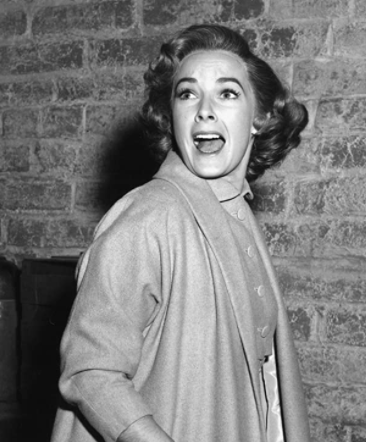
Some viewers psychoanalyzing this film have considered Marion’s sister as either a lesbian or merely asexual, since we don’t get any sense that she has ever been interested in men like Marion is interested in Sam and it is suggested that she is a bit older than Marion. This also reflected an innocent bygone time when families tended to stick together much more frequently, but sometimes in a negative way as to stiffen an individual’s need for freedom.

One scene that humors me involves Marion’s co-worker Caroline (Pat Hitchcock, the director’s daughter) commenting on both her husband checking on her and her mother checking up on her husband so that the whole family is fully “supervised.”

For a film all about peep holes and sexual secrets, the famous animator and graphic designer Saul Bass provides us with one of his greatest and simplest opening title sequences to prep us. Note how the simple lines running from one end of the screen to the other morph into the credits, then break up shockingly in tune to Herrmann’s shocking music score to suggest we are in for 109 minutes of shocks galore. They also resemble the hotel blinds that we “peep” through to see Marion and Sam in states of undress barely a minute after the title sequence.

Lots of interesting tidbits are presented twice. We have two shocking stab scenes. Marion changes two cars, the ’57 Ford ending up in the swamp with her corpse. Also she has two bras, the one in the beginning is white and the one after she steals the money is black. Two visits by investigator Arbogast to Norman’s mother makes sure there is not a third visit. Two references to humans not wanting to harm insects; first, in a scene with a customer reading a bottle of insecticide at Sam’s hardware store and later Mother saying she would not hurt a fly.

There are a lot of cinematic visual delights peppered throughout, but I need to point out a few in the first half in particular. Although I may be a trifle skeptical of what Marion does since it does not fit Janet Leigh’s rather distinctive personality, it is all choreographed brilliantly. I especially love how she conjures up “voices” as she drives, imagining the various outcomes of her deed and constantly questioning herself “why am I doing this?”
Janet is a brilliant actress here whom all of us who have never once stole a wad of bubble gum from a pharmacy can easily relate to. I also love how she is so cautious at the used car dealer, but also forgetting her case when she is hastily trying to pull out. Also a brilliant touch is to show the cop checking on her wearing the darkest sunglasses imaginable.
While one can nitpick certain details that seem dated by today’s standards, this is representative of a director who had been working in the movie business for almost four decades and was at his creative zenith. Like Walt Disney and Cecil B. DeMille, he knew exactly what the public wanted. Everything about this film knits together as a perfect fabric and continues to fascinate no matter how many times you view it.





